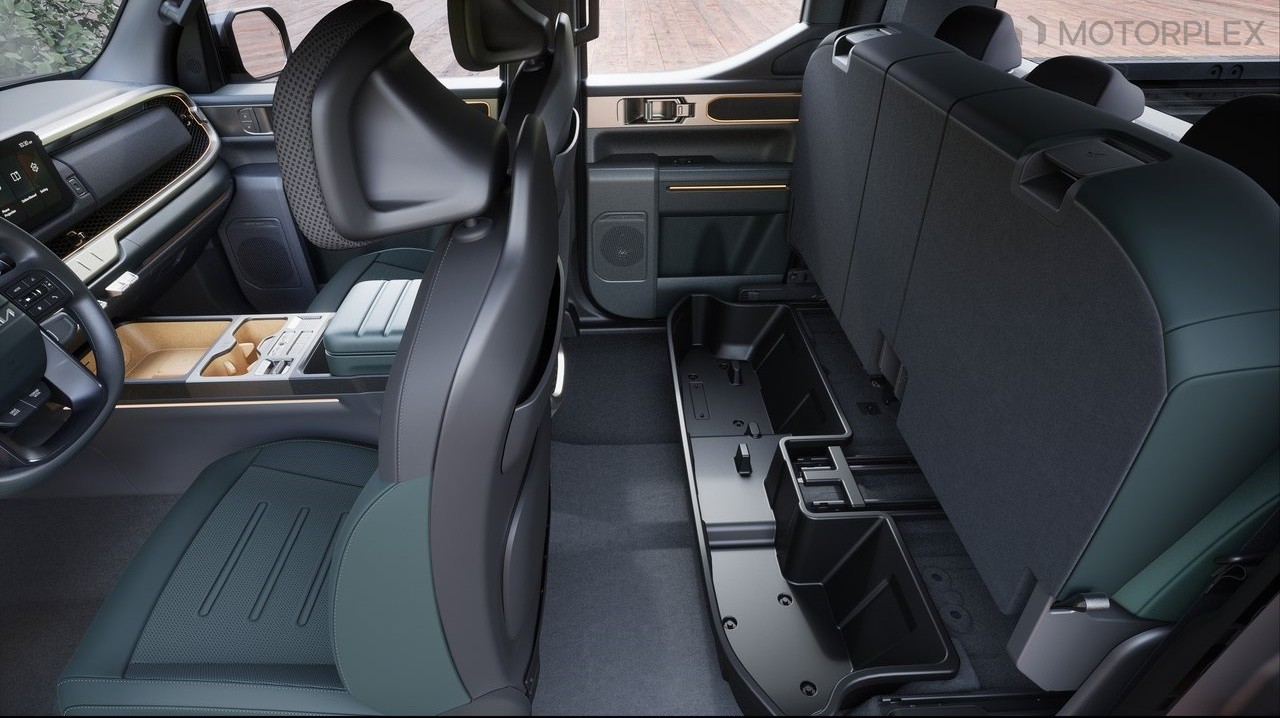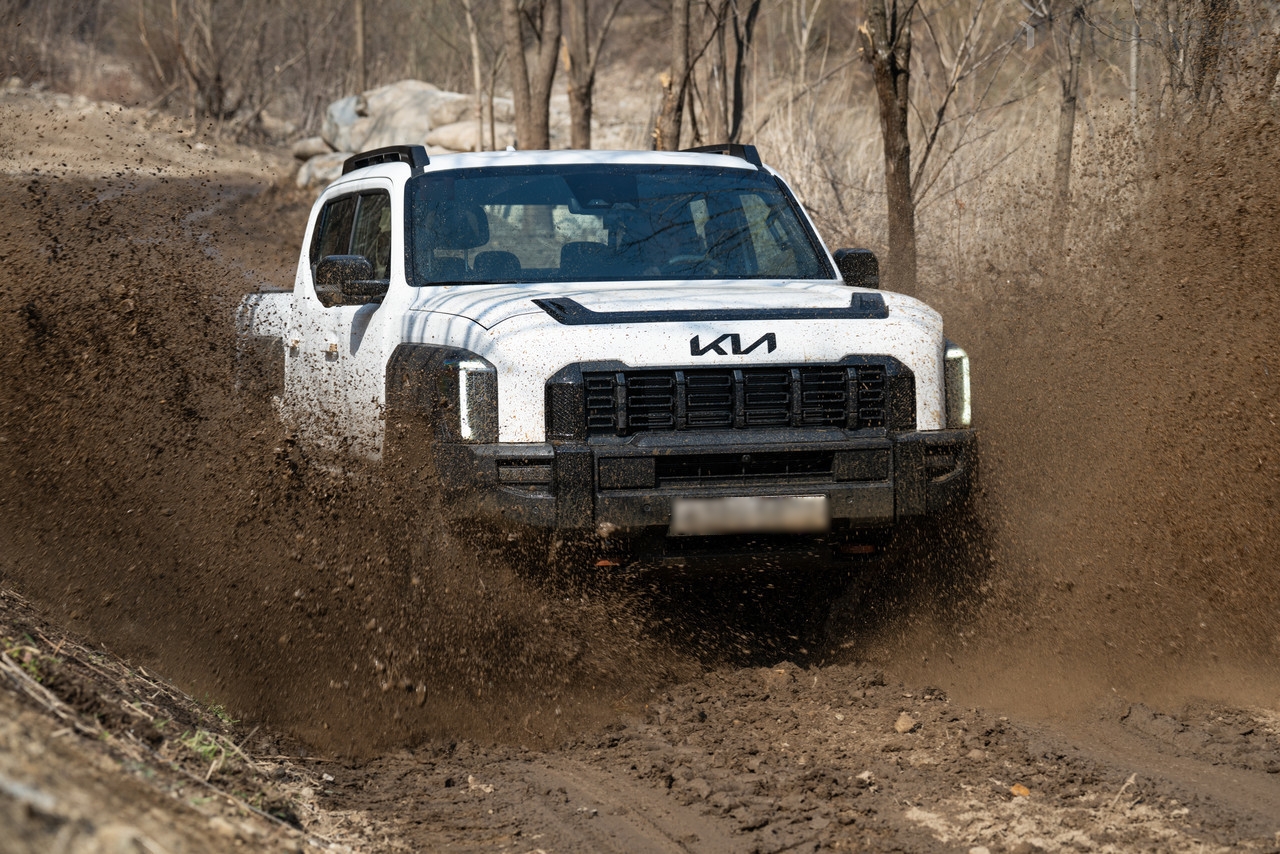
GOOD
- Packed with stunning interiors, the latest features, and reliable off-road equipment.
- Offers second-row comfort and endless expandability that are hard to find in the same class.
BAD
- So new that its design leans more towards polarizing than popular.
- “Do you drive a truck?”
Competitors
- Chevrolet Colorado: Superior in every aspect, but its price has soared from about $31,000 to over $60,000.
- KGM Musso Khan: It’s more attractive, with a diesel option starting at about 31.72 million KRW (approximately $23,000).
Kia launched its first-ever pickup truck, and it’s not just a copycat. A glance at the specifications shows it’s ready for serious off-road adventures. It can ford through water up to 800 mm (31.5 inches) deep. In a world where disasters can strike at any moment, can the Kia Tasman provide the reassurance of being a sturdy vehicle?
Design

The Tasman’s appearance has sparked mixed reactions since its debut. Its robust build and angular body shape reflect the classic image of a pickup truck. However, the relatively small grille and the placement of the headlights at the ends of the body create a unique yet somewhat awkward aesthetic.

The details are impressive. The headlights and fog lights use LEDs to provide a wide field of vision, while the daytime running lights create a cohesive design. The unique wheel cladding hides the fuel cap and table, showcasing Kia’s innovative approach in the pickup segment.

The interior maintains Kia’s signature colors. The display panel connects the air conditioning controls with the instrument cluster and infotainment screen, and it features a center armrest that can be extended into a table.

The Tasman incorporates the toughness and practicality expected from a pickup truck. The upright dashboard features honeycomb-patterned air vents and a spacious storage area on the center tunnel, while large buttons and off-road toggle switches enhance its ruggedness. Various storage spaces and specifications beside the fingerprint recognition button contribute to its practicality.

The ability to slide the second-row seats and adjust the backrest angle, along with ample storage space beneath the seats, sets the Tasman apart in its class.
Performance

The Tasman available in Korea features only one powertrain: a 2.5-liter gasoline engine. It generates 281 horsepower and delivers a maximum torque of 43 kgm (311.4 lb-ft). The test vehicle includes an all-wheel-drive option that distributes the engine’s power to all four wheels. The engine starts smoothly and runs quietly, providing a refined driving experience.

The power transfer from the engine to the wheels is seamless. Thanks to its torque-focused setup, it easily moves the vehicle, which weighs over two metric tons (4,409 lbs). The vibrations and noise typically accompanying higher RPMs are significantly suppressed, allowing for unprecedented quietness and smoothness in a pickup.

The ride quality on everyday roads feels smooth. The cabin feels unusually refined and well-insulated for a body-on-frame vehicle when going over speed bumps or navigating city potholes.
However, experiences differ on highways where speed increases are necessary. The vehicle’s high center of gravity and soft suspension make maintaining stability at high speeds challenging. While the long wheelbase (3,270 mm, 128.7 inches) helps maintain calm during straight driving, slowing down before turning or changing lanes is safer. Subtle vibrations between the frame and cabin are still noticeable when the vehicle encounters shocks at higher speeds.

Nevertheless, the Tasman is built for off-road use. Its capabilities are evident on terrain where standard vehicles struggle. In testing, the Tasman navigated through rocky trails, water crossings, muddy paths, and uneven ground that caused one or two wheels to lift from the surface.

The vehicle handled the obstacles easily. Operating the Tasman over rugged terrain, I felt composed and controlled. While the exterior view might suggest a challenging route, the interior ride remained stable and quiet.

The suspension handled uneven surfaces smoothly, and the rigid frame maintained structural integrity even during wheel lift. When crossing water up to the bumper level, onboard electronic systems operated effectively, ensuring continued progress. While there were initial concerns about the Tasman’s off-road abilities, the test confirmed that it performs well in demanding environments.

When Kia first introduced the Tasman, some questioned the practicality of a full-size pickup in urban settings. In daily use, it offers a comfortable city drive and versatile storage for recreational use. Importantly, it provides a reassuring level of utility during emergencies involving fire, flooding, or snowfall. The all-wheel-drive version starts at about 40.15 million KRW (approximately 29,000 USD).
























